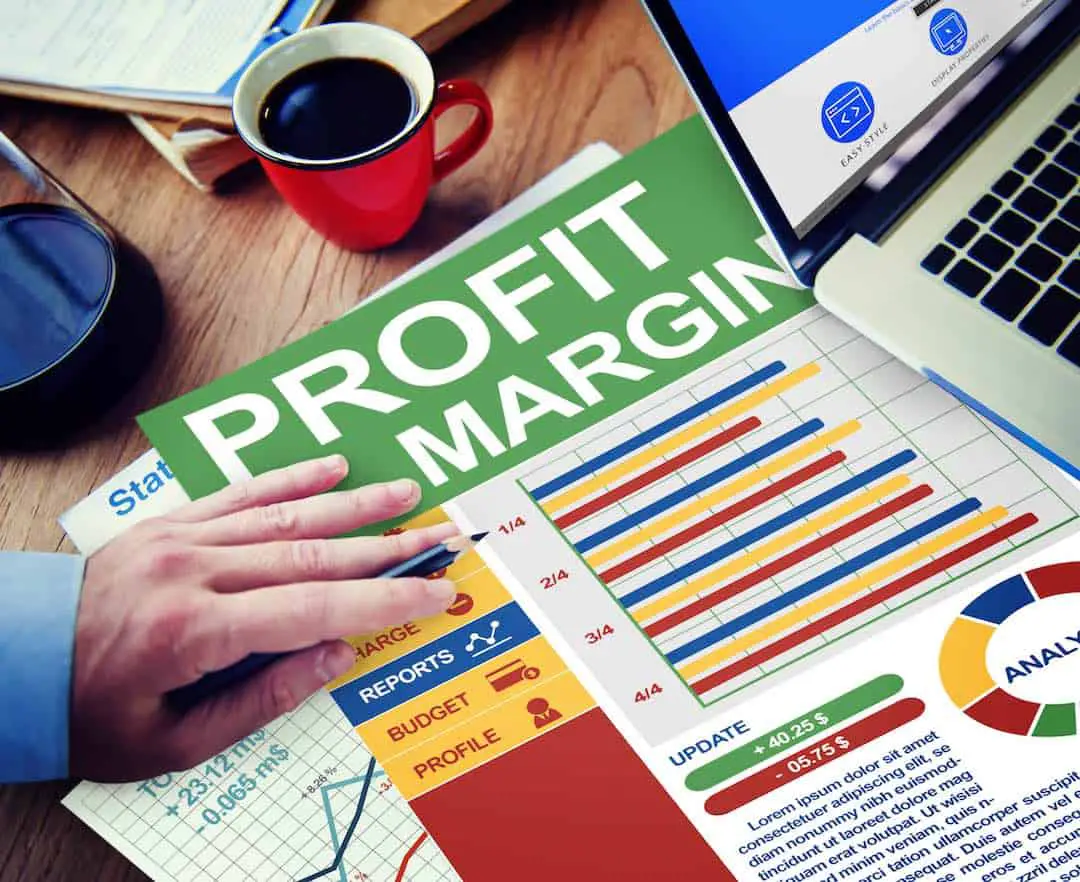Table of Contents
*This post may contain affiliate links. As an Amazon Associate we earn from qualifying purchases.
When developing a sales promotion program we talk a great deal about ROI (Return on Investment) as to how successful a program may or may not be. As part of that analysis you need to also be looking at the profit margin of the product you may be offering. To make a sales promotion program more attractive you may take a lower margin on a product to get customers to buy now or to try something new. Some call those offers loss leaders (well, personally, I never want to take a loss, but you may say that and only mean you are making a smaller profit margin on that item).
Mark-Up is not the same as Profit Margin

I’ve found over the years that people are confused about margins. Most think that mark-up and margins are the same thing, when in reality they are not. My father was/is one of the best salesmen and business owners I’ve ever known and he taught me the difference at a very young age. He was always telling me not to leave money on the table!
And many people do leave money on the table because they may think that if they are marking something up 20% then they are getting a 20% profit. But that is not the case!
So, what is the definition of margins? Why is it so hard to grasp?
Margin is basically a shortened term for profit margin which is the percentage of the resale price that is profit. For instance, if the cost of the goods to you is $5.00 and you resell it for $6.25 then your profit margin is 20% (in other words the $1.25 profit is 20% of the $6.25 resale).
Don’t lose Money by Just Marking it Up!
Unfortunately so many people lose out on profits because they just mark it up! So instead of using a 20% margin on the $5.00 item they just mark it up 20%. By doing that you lose out on $.25 profit on each sale, because $5.00 x .20 (mark-up) is only $1.00 which makes your sale price $6.00 instead of $6.25 and then what is the margin? It’s only 16.66% and not the 20% profit margin they thought!
Think about it, if you are consistently selling at a margin 3.34% less than your plan your end result is much less than anticipated and affects your gross margin. The gross margin reflects your total revenue minus your cost of goods sold. That means you haven’t taken out any of your overhead expenses or taxes. It’s basically the fixed costs of whatever it costs you to have a product to sell.
The gross margin amount helps a business to understand the level of money left to pay for those overhead expenses like sales, administration, rent, utilities and the like as well as to generate a profit.
Understanding Your Margin is Vital to Success

That’s why understanding your margin is so vital to the long term success of your business and is doubly so when you are developing a sales promotion program. Because you don’t want to end up giving too much away even if you are generating more sales!
Let’s look at a more in-depth scenario.
At various times of the year you can go into most any department store (or online) and see a promotion for 25% off. Not a bad deal depending on the item. But is the store losing 25% of profit as well? No!
Say the item cost the store $14.00 and they typically have a 50% margin on the item so they sell it for $28.00. If they give a 25% discount $28.00 x .25 they are lowering the price by $7.00 to $21.00. Now their cost is still $14.00 – so they are now only making $7.00 instead of the previous $14.00 per item sold. Now, what is their margin? It has now been reduced to 33.33%. For this business it still may be a decent margin. However, when developing a sales promotion your goal may be to bring more customers into your location or to visit your website and then convert them to longer term customers so this reduced margin may be worth it.
Don’t Ignore Your Profit Margin for Promotions
A promotion that I see quite regularly is 25% off the second item purchased of equal value. That is their way of not reducing their margin quite so much but making it appear they are giving you a great deal.
If you look at our earlier example of cost being $14.00 with a 50% margin for a sale price of $28.00 but they have to buy two to get 25% off of one. $28.00 + $21.00 = $49.00 – $28.00 = $21.00 in gross profit and now the margin is 42.85% versus the previous only 33.33%. That adds a nice bump to the bottom line.
In my business I have a low-end threshold for any programs that I will not go below for my margin. I understand my overhead expenses and recognize that while it might look like I am making

money, I may not be.
Last year I had a client ask us to bid on a project. They told us we weren’t awarded the project because they felt our cost was too high. A year later they came back to us and said if we matched the previous companies pricing they would give us the project. I told them I couldn’t match the previous pricing (the margin threshold was too low) so why not just go back to the company that did it for them previously. Their response, “well, they went out of business.” My thinking is of course was they didn’t have a firm understanding of their margins and the overall profitability of the business.
So, when you are developing your next sales promotion plan be sure to look at all the numbers and don’t get caught ignoring your margins!

